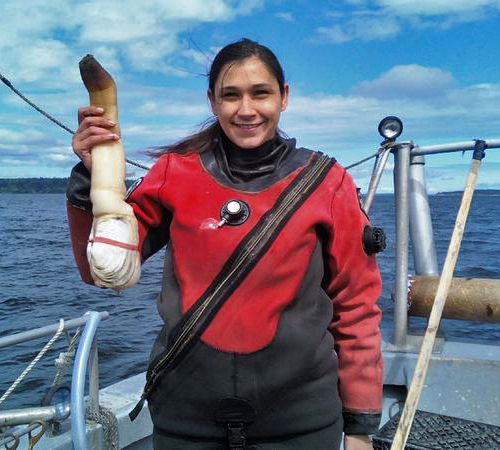Fisheries  Shellfish
Shellfish
Geoduck
 The Rafeedie decision on shellfish harvesting and management applies to geoduck, a large, edible saltwater clam native to the west coast of North America and known for its unusual appearance.
The Rafeedie decision on shellfish harvesting and management applies to geoduck, a large, edible saltwater clam native to the west coast of North America and known for its unusual appearance.
Geoduck can burrow 2 to 3 feet down into the substrate. During commercial harvest, water jet hoses—called stingers—are used to liquefy the sand so the clams can be pulled out by hand. Geoduck divers work off boats equipped with surface supplied air, as they are working in depths that range from 18 to 70 feet below the surface!
Geoduck harvest levels are based on a 2.7% annual harvest rate of surveyed geoduck. Before harvest, the stock is tested for Paralytic Shellfish Poisoning.
The Port Gamble S’Klallam Tribe started harvesting geoduck in 1996. Early on, the Tribe maintained an Individual Fishing Quota (IFQ) wherein the total number of pounds is divided equally among all the divers. In 2002, PGST set a limit on the number of divers who could participate in the geoduck harvest. Currently running at max capacity, there is a list of divers waiting to participate, with a new diver being added to the program only after one has left.
In 2014, to help divers who want to retire transition out of the program, PGS Tribal Council initiated a buy-out program, which provides one year of income without having to dive and harvest. This allows the diver to adjust to a reduction in earnings.
If you are an eligible PGS Tribal member who is interested in joining the geoduck harvest wait list, please contact the Natural Resources office.
